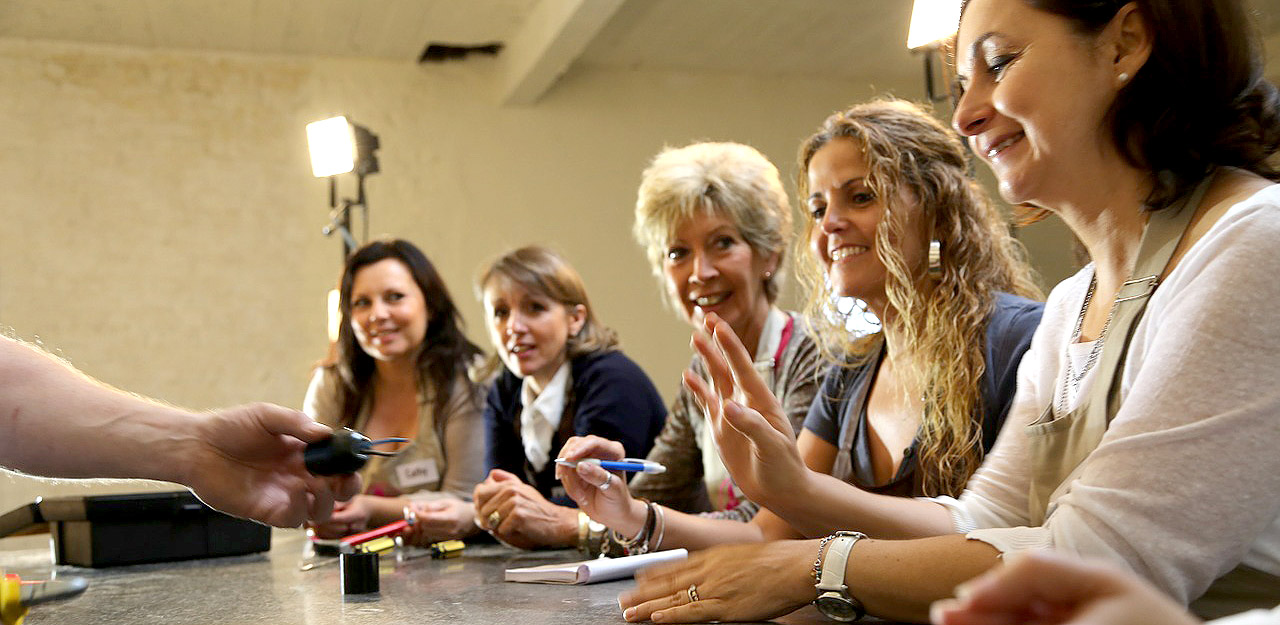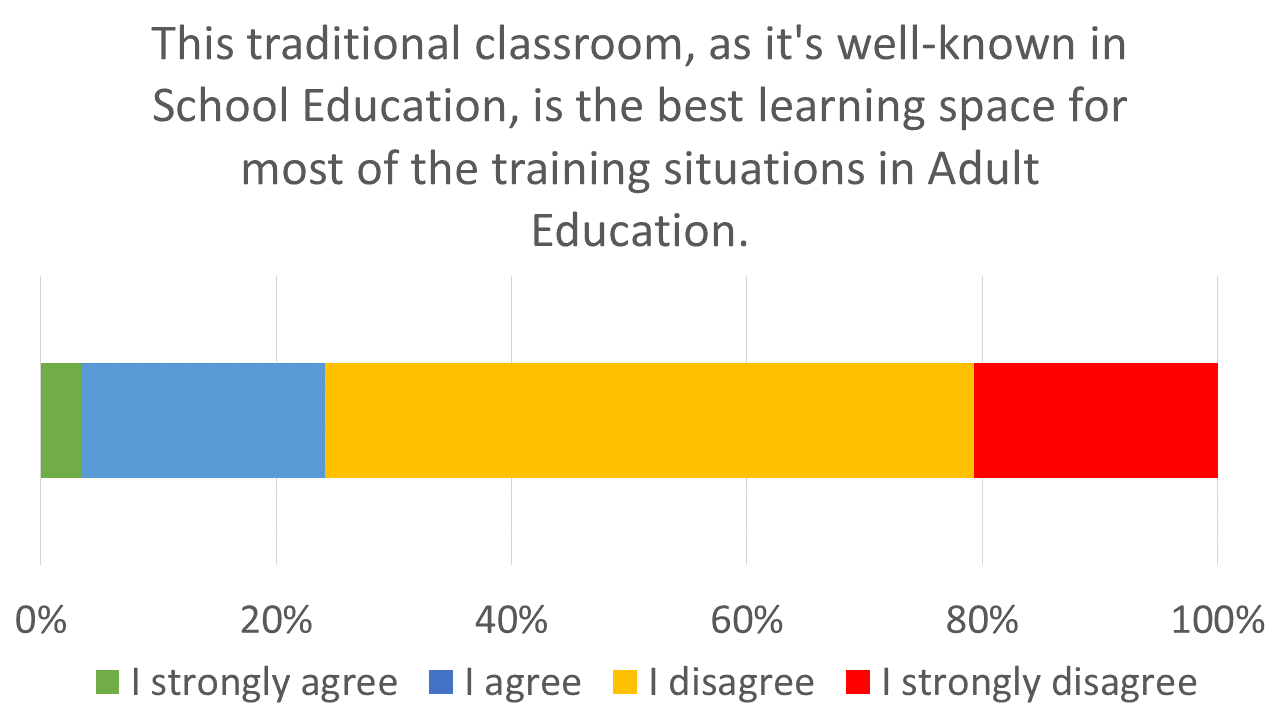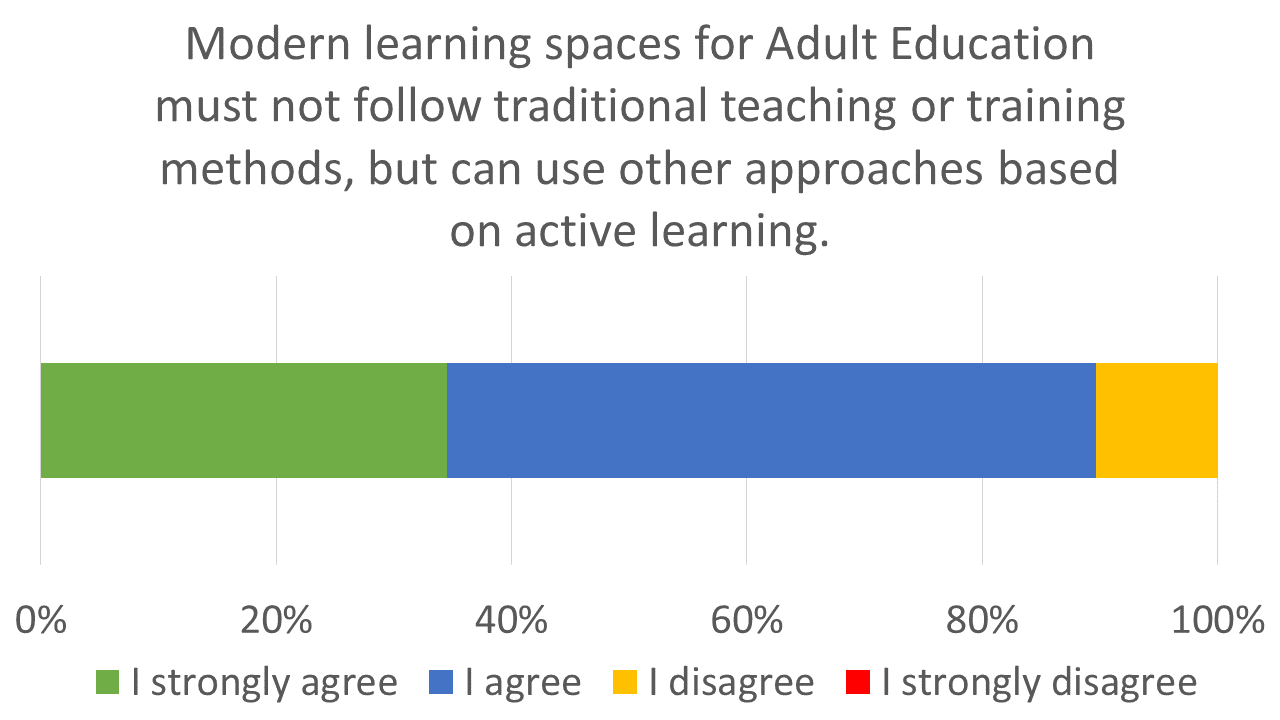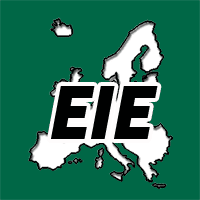Contents
School Education
In the past, it was clear what lessons should look like: The teacher stands at the front and explains, and the pupils listen and eagerly take notes on narrow benches. However, profound changes have taken place recently: Frontal teaching has been accompanied by problem-solving and independent learning such as group or individual work. In short, teaching methods have changed fundamentally over the last 100 years. So far, the situation in Schools is.

Adult Education
Adult Education is similar to school education. The reason might be on one hand that the adults remember their time at school and have certain expectations (and expect a similar learning environment as they were used to learning). On the other hand, adult education training is frequently done by school teachers – and they do as they are used to at school (because they don’t know better).
Non-Formal Education
Adult education is a non-formal Education. This means that there (often) is no explicit curriculum, and the learning outcomes count. Additionally, exams or typical assessments as they are done at school are unusual. Most adults have a high level of motivation – they simply want to reach the learning objectives. This led to the use of non-formal assessments in adult education, and to typical methods of monitoring the learning progress (implemented by the trainer).

Need for versatile learning spaces
The items mentioned above lead to the need to design learning spaces differently. Modern training in adult education is not based on lectures and presentations but on active learning by the learners, cooperative learning processes, and similar modern training methods.
These considerations result in the need for new, innovative learning spaces.
Various experiments and school trials have been taking place for years in the school sector and in higher education – without changing the educational landscape significantly.
The empiric case study
The EBI has undertaken an empirical study about the view point of adult educators. The study has been based on a questionnaire sent out to the target group of adult educators (token-based to ensure that only the addressed trainers could answer). The sample was n=30, addressing trainers from several European countries (Spain, Sweden, Greece, Italy, Portugal, Norway, Denmark, and Poland).
Here are the evaluated outcomes of this case study,
- This traditional classroom, as it’s well-known in School Education, is the best learning space for most of the training situations in Adult Education.

EBI case study: Traditional Classroom is the best learning space for adult education. - This open learning space, group-based and focusing on collaboration, is the best learning space for most of the training situations in Adult Education.

EBI case study: Open learning space, group-based and focuses on collaboration - Modern learning spaces for Adult Education must be flexible in spatial design. It must be possible to change the spatial arrangement easily.

EBI case study: Learning spaces for Adult Education must be flexible in spatial design. - Modern learning spaces for Adult Education must not follow traditional teaching or training methods but can use other approaches based on active learning.

EBI case study: Modern learning spaces for Adult Education must not follow traditional teaching or training methods.
Specific feedback coming from the addressed trainers
- As I teach very often adults from various countries, it’s strange but true, when I introduce new methods, class activities, and personalized learning methods (deriving from mastery learning) adults somehow still prefer traditional classroom activities and space settings. The older they are, they often tend to feel uncomfortable with innovative methods, working in groups, experimenting with tools or products in class, speak out in public in front of others. I rather use mixed methods, some explanations and new methods (based on the subject I need to teach) or gamification of some activities work well. However, extremely innovative methods do not really work
- In my view, learning spaces should be flexible enough to accommodate the type of activity to be carried out; i.e, sometimes traditional learning methods (direct instruction) can be used at some point combined with cooperative learning methods.
- In my opinion, creativity and innovation are playing a big role in connection to teaching activities. Moreover, it could be challenging to follow just one approach because it is very individual and with different educators and learners, different approaches may be efficient.
I think it is an interesting project and I wish you good luck with the development. - Each learning space must be adapted to the adult group (age, needs, disability) and the training topic and teaching methods selected. The distance from where the participants live is also important.
- The train organizer must take into consideration the specific target group (for example:age, digital competences, experience in trainings).
Used resources
- Modern training space: thinglink.com/scene/1274377878766616579
- Principles of Design and Implementation of L&T Spaces: Lessons Learnt from German and Portuguese Higher Education, 2021, 14th International Conference of Education, Research and Innovation – ICERI 2021, Sevailla, Spain; DOI: 10.13140/RG.2.2.28696.52486
- Innovative Learning Spaces in the Making, Janette M. Hughes†, Laura J. Morrison, 2020, DOI: doi.org/10.3389/feduc.2020.00089
